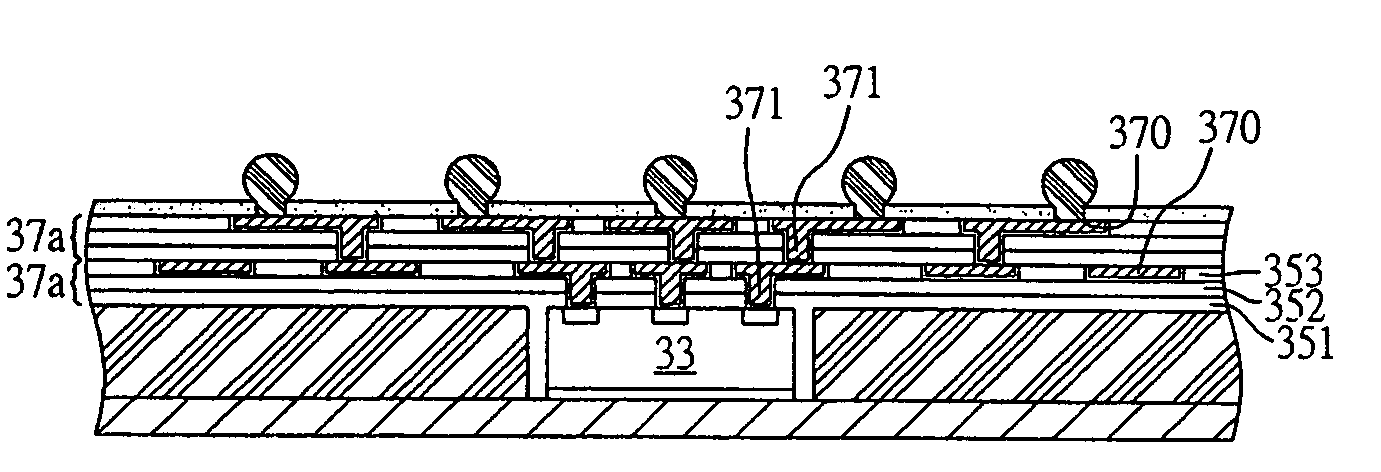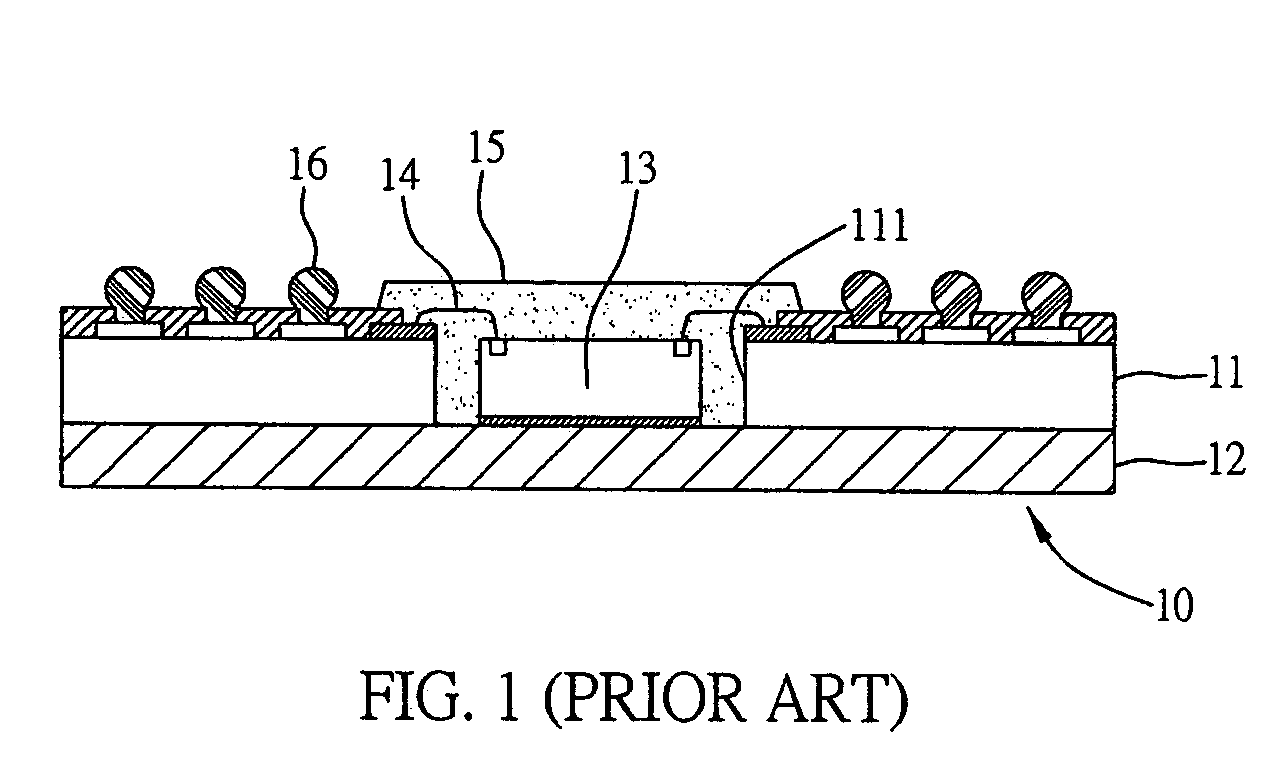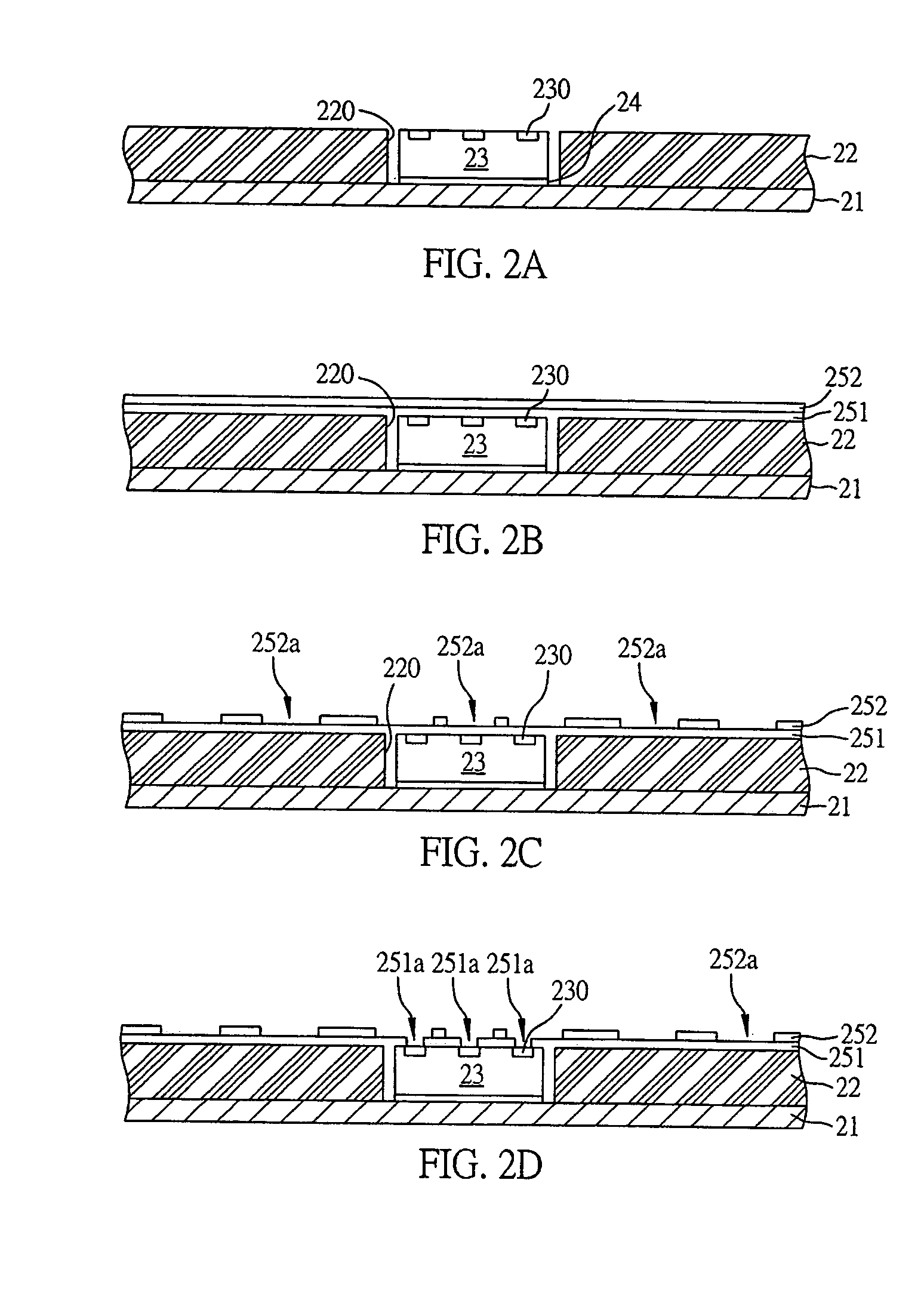Superfine-circuit semiconductor package structure
a semiconductor and superfine-circuit technology, applied in semiconductor devices, semiconductor/solid-state device details, electrical devices, etc., can solve the problems of limiting the height at which solder balls are disposed, lessening the routability of the substrate, and increasing the difficulty of wire bonding, so as to improve the reliability and simplify the process of conventional semiconductors , the effect of reducing costs
- Summary
- Abstract
- Description
- Claims
- Application Information
AI Technical Summary
Benefits of technology
Problems solved by technology
Method used
Image
Examples
Embodiment Construction
[0021]The following specific embodiments are provided to illustrate the disclosure of the present invention, these and other advantages and effects can be apparently understood by those skilled in the art after reading the disclosure of this specification. The present invention can also be performed or applied by other different embodiments. The details of the specification may be modified or changed on the basis of different points and applications without departing from the spirit of the present invention.
[0022]FIGS. 2A to 2H are cross-sectional schematic diagrams showing how to fabricate a superfine-circuit semiconductor package structure in accordance with the present invention.
[0023]As shown in FIG. 2A, the present invention provides a carrier board 21 on which a support board 22 with a through hole 220 is mounted. At least one semiconductor chip 23 is mounted on the carrier board 21 and received in the through hole 220 of the support board 22. The support board 22 is one selec...
PUM
 Login to View More
Login to View More Abstract
Description
Claims
Application Information
 Login to View More
Login to View More - R&D
- Intellectual Property
- Life Sciences
- Materials
- Tech Scout
- Unparalleled Data Quality
- Higher Quality Content
- 60% Fewer Hallucinations
Browse by: Latest US Patents, China's latest patents, Technical Efficacy Thesaurus, Application Domain, Technology Topic, Popular Technical Reports.
© 2025 PatSnap. All rights reserved.Legal|Privacy policy|Modern Slavery Act Transparency Statement|Sitemap|About US| Contact US: help@patsnap.com



